A diagram of a neuron and its functions. a study in chartreuse
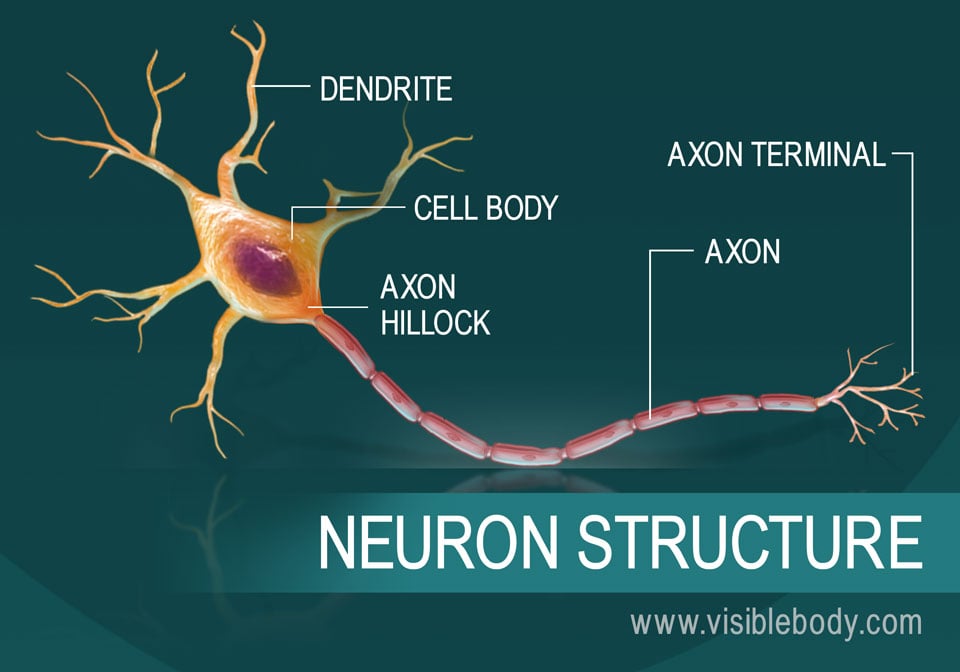
Neurons
Neurons (also known as neurones and nerve cells) are electrically excitable cells in the nervous system that process and transmit information. In vertebrate animals, neurons are the core components of the brain, spinal cord and peripheral nerves. Image:Complete neuron cell diagram.svg In some countries this may not be legally possible; if so:

A diagram of a neuron and its functions. a study in chartreuse
Neuron under Microscope with Labeled Diagram 25/04/2023 31/03/2022 by anatomylearner The structural and functional unit of the nervous system is the neuron that may easily observe under a light microscope. Neurons may vary considerably in size, shape, and other features.

Neuron Diagram Straight from a Scientist
Nervous tissue is composed of two types of cells, neurons and glial cells. Neurons are the primary type of cell that most anyone associates with the nervous system. They are responsible for the computation and communication that the nervous system provides. They are electrically active and release chemical signals to target cells.

Anatomy Of A Neuron ANATOMY
A neuron consists of neurotransmitters in the synaptic vesicles of the terminal buttons; it releases chemicals that travel across a synapse and conduct signals from one neuron to another one. Ques. Draw a labelled diagram of the neuron. (2 marks) Ans. Ques. What are receptors and what are the classification of receptors? (2 marks)

Neuron Study Guide Inspirit Learning Inc
Neurons or nerve cells are the basic building blocks or units of the nervous system. Nearly 86 billion neurons work co-ordinately within the nervous system to keep the body organized. They are highly specialized cells that act as information processing and transmitting units of the brain. A group of neurons forms a nerve.

Figure 7 4 Structure Of A Typical Motor Neuron Bangmuin Image Josh
Neuron. Within a nervous system, a neuron, neurone, or nerve cell is an electrically excitable cell that fires electric signals called action potentials across a neural network. Neurons communicate with other cells via synapses, which are specialized connections that commonly use minute amounts of chemical neurotransmitters to pass the electric.
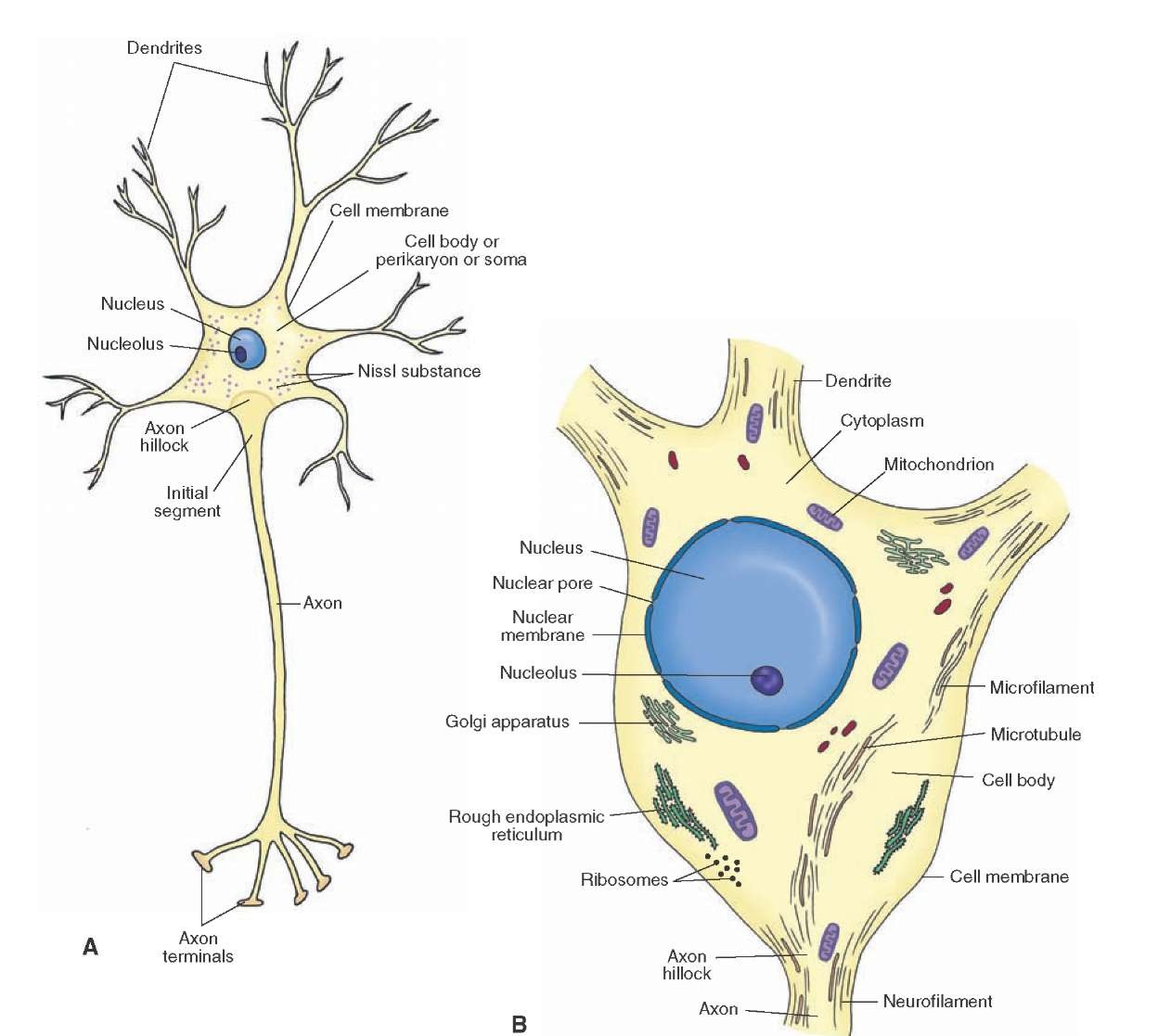
Histology of the Nervous System (The Neuron) Part 1
An Easy Guide to Neuron Anatomy with Diagrams By Olivia Guy-Evans, MSc Updated on November 9, 2023 Reviewed by Saul Mcleod, PhD Neurons are the information processing units of the brain responsible for sending, receiving, and transmitting electrochemical signals throughout the body.
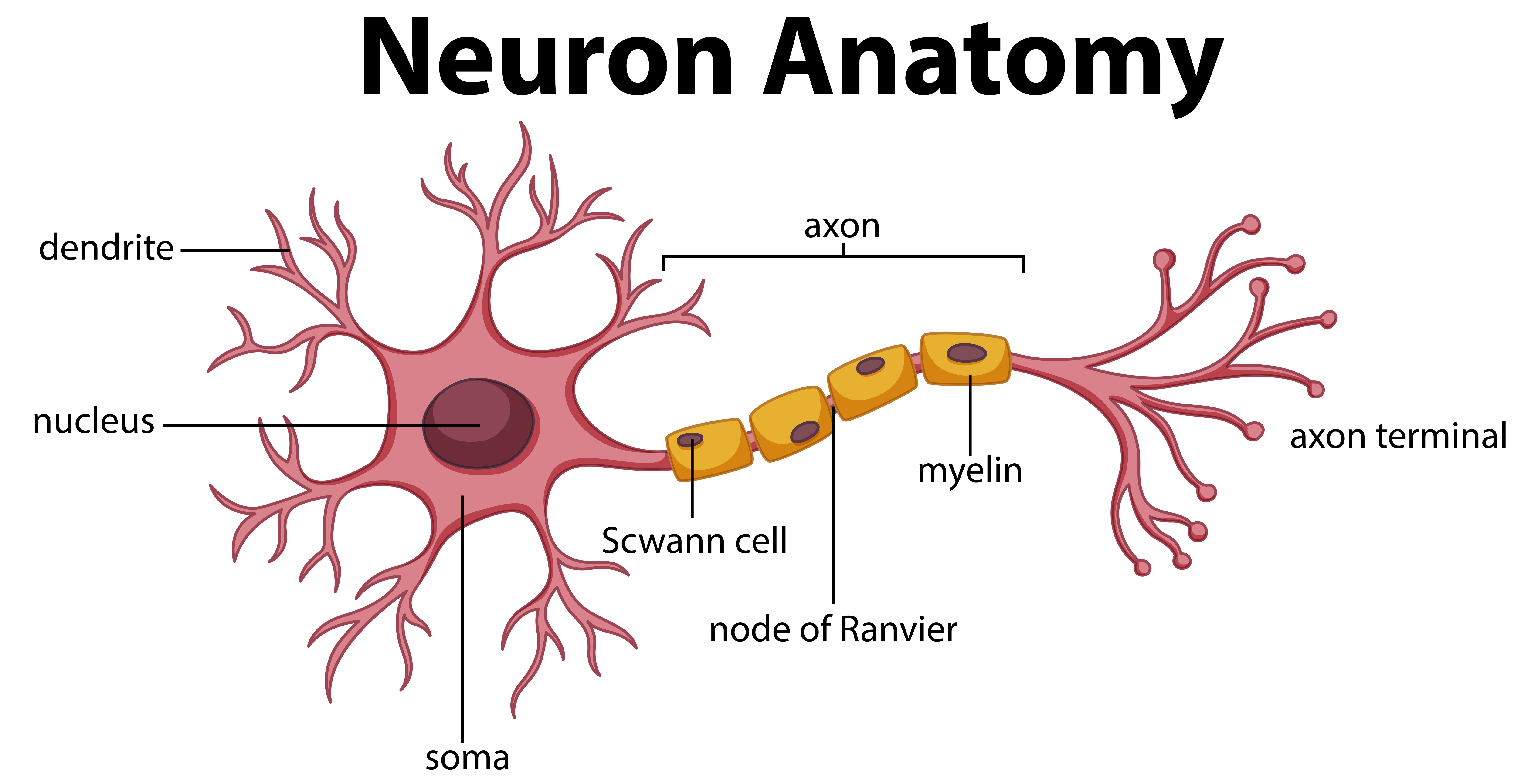
neuron diagram labeled
What is a Neuron? Neurons are the building blocks of the nervous system. They receive and transmit signals to different parts of the body. This is carried out in both physical and electrical forms. There are several different types of neurons that facilitate the transmission of information. 6,435
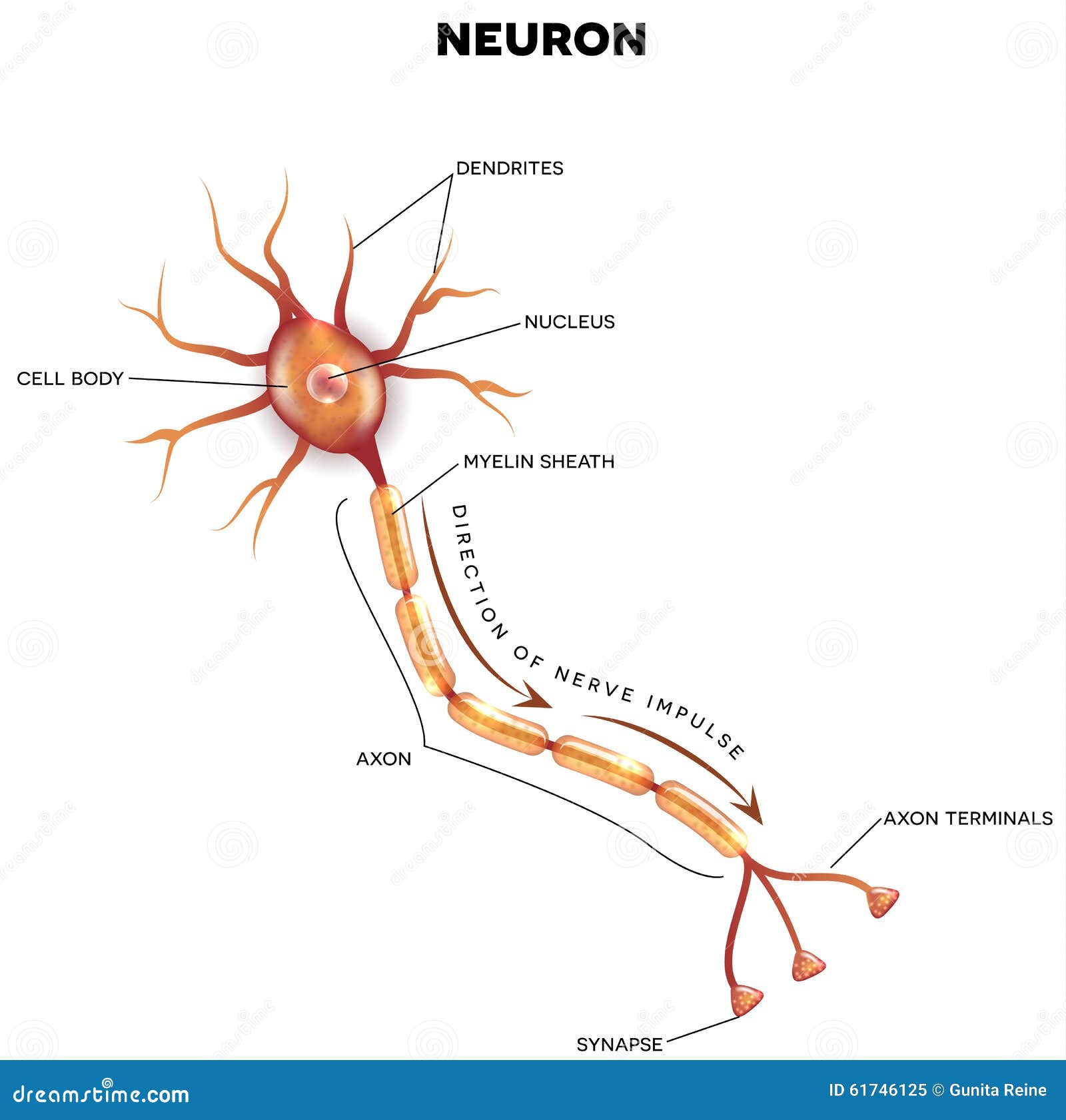
Labeled Diagram of the Neuron Stock Vector Illustration of anatomical
At the synapse, the firing of an action potential in one neuron—the presynaptic, or sending, neuron—causes the transmission of a signal to another neuron—the postsynaptic, or receiving, neuron—making the postsynaptic neuron either more or less likely to fire its own action potential.
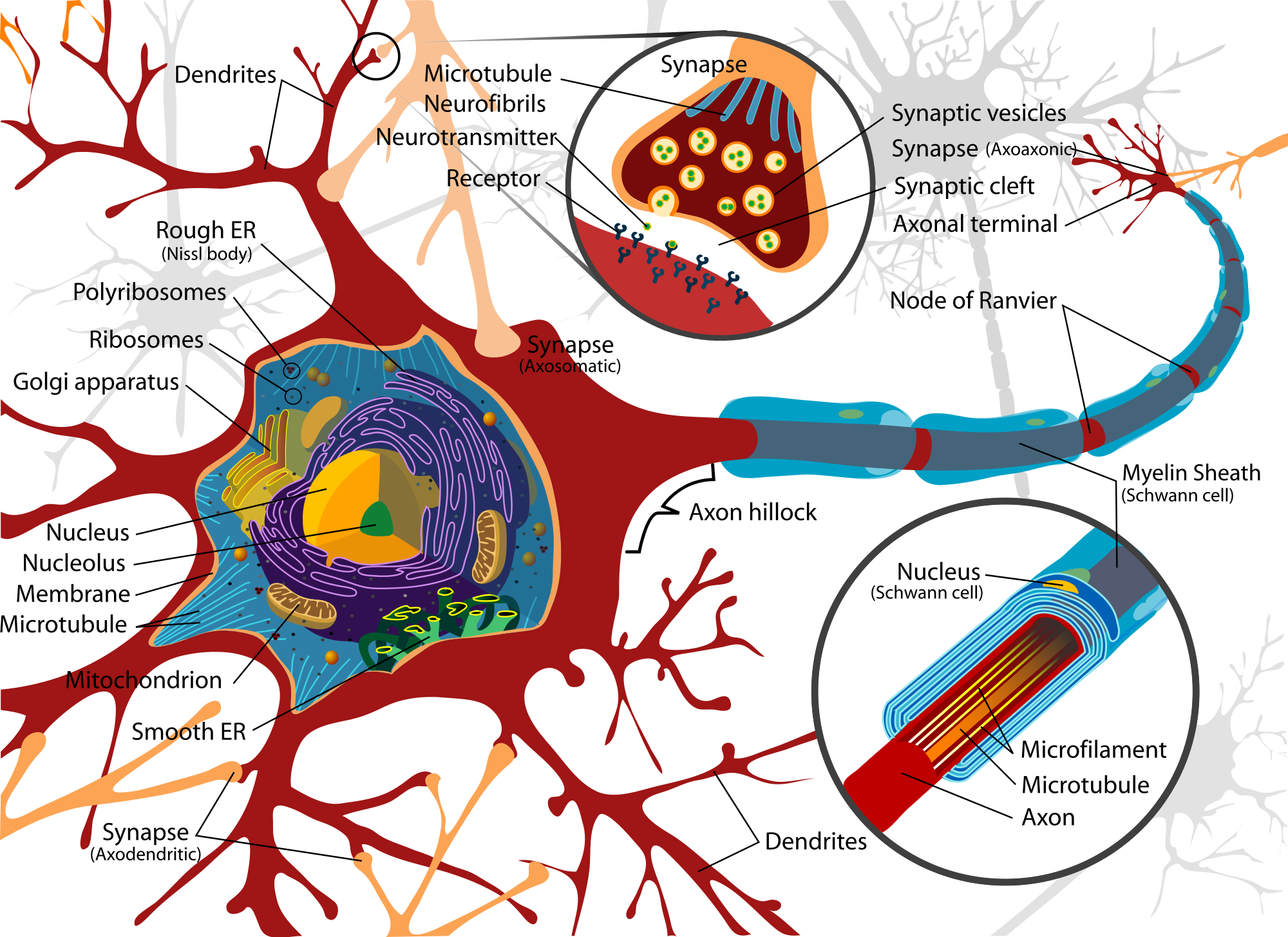
Nerve Cell Diagram Labeled ClipArt Best
An Easy Guide to Neuron Anatomy with Diagrams Anatomy Types Function Research Takeaway Neurons, also known as nerve cells, send and receive signals from your brain. While neurons have a lot.

Health Lab 4.1 Introduction
A Labelled Diagram Of Neuron with Detailed Explanations Biology Biology Article Diagram Of Neuron Diagram Of Neuron A neuron is a specialized cell, primarily involved in transmitting information through electrical and chemical signals. They are found in the brain, spinal cord and the peripheral nerves. A neuron is also known as the nerve cell.

The Nervous System (Structure and Function) (Nursing) Part 1
A neuron (nerve cell) is a specialized cell that conveys electrochemical impulses throughout the body. The cytology of a neuron facilitates the transmission of either: 'top-down' information from the brain to the periphery, via efferent neurons (e.g. to permit locomotion) (efferent neurons) or,

What does a neuron look like? Biology Questions
The nervous system is a network of neurons whose main feature is to generate, modulate and transmit information between all the different parts of the human body. This property enables many important functions of the nervous system, such as regulation of vital body functions ( heartbeat, breathing, digestion), sensation and body movements.
:max_bytes(150000):strip_icc()/neuron-anatomy-58530ffe3df78ce2c34a7350.jpg)
Neuron Anatomy, Nerve Impulses, and Classifications
neuron, basic cell of the nervous system in vertebrates and most invertebrates from the level of the cnidarians (e.g., corals, jellyfish) upward.A typical neuron has a cell body containing a nucleus and two or more long fibres. Impulses are carried along one or more of these fibres, called dendrites, to the cell body; in higher nervous systems, only one fibre, the axon, carries the impulse.
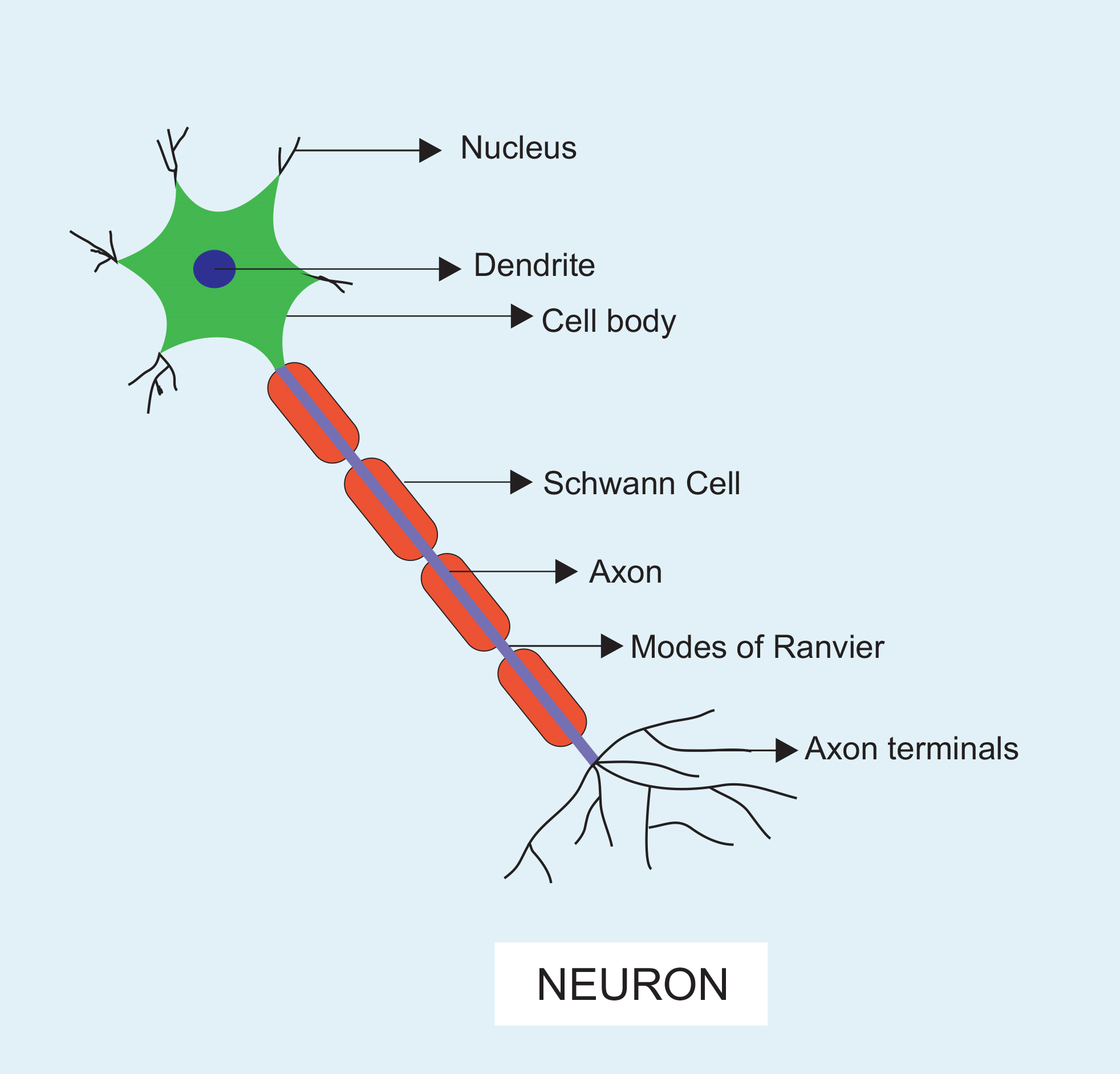
What does a neuron look like?
Neuron Anatomy Nerve Cell: Dendrites receive messages from other neurons. The message then moves through the axon to the other end of the neuron, then to the tips of the axon and then into the space between neurons. From there the message can move to the next neuron. Neurons pass messages to each other using a special type of electrical signal.

Neurons The crazy wires in our body. Doc Jana
Labeled Diagram of a Neuron Definition of Neuron The building blocks of the system responsible for transmitting and processing information are called neurons. What are Neurons? Neurons are specialised cells that plays an important role in facilitating communication among different parts of our body.